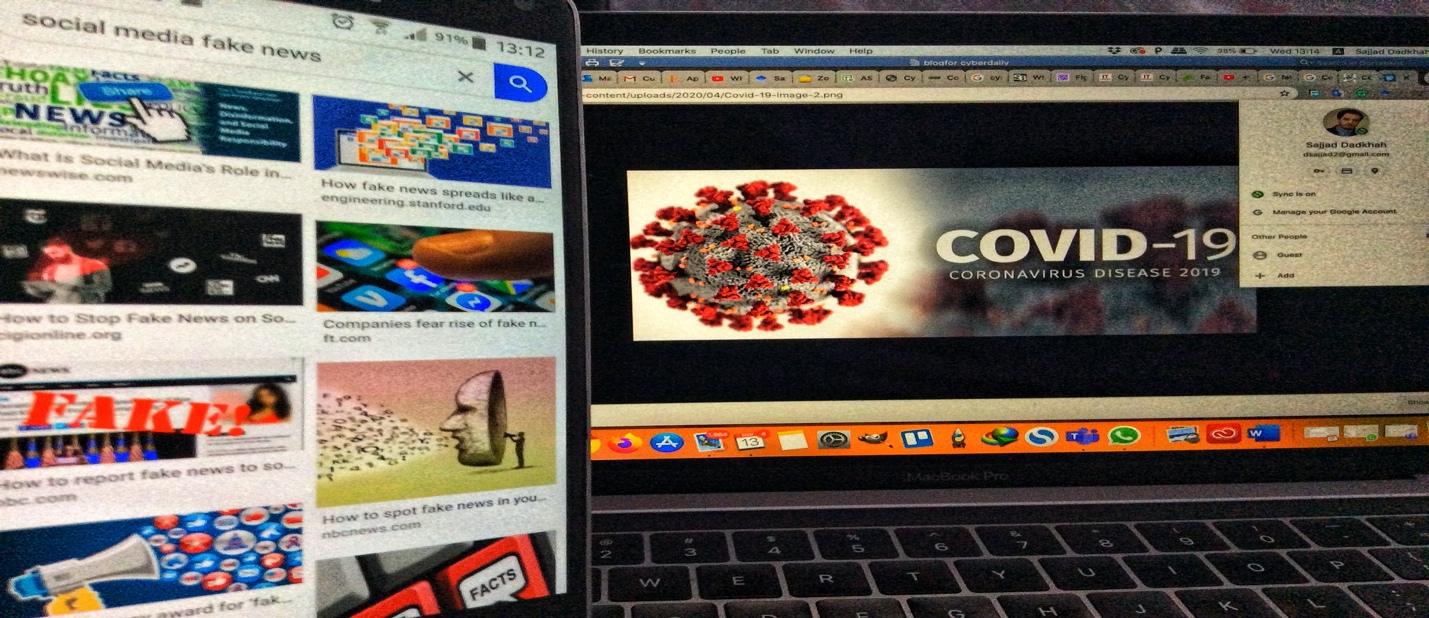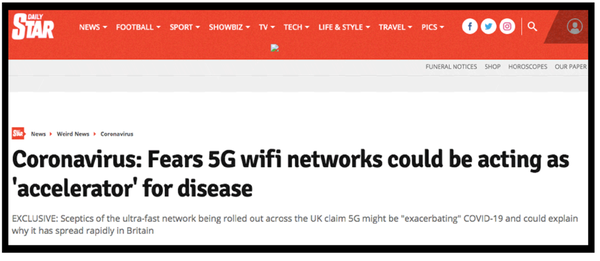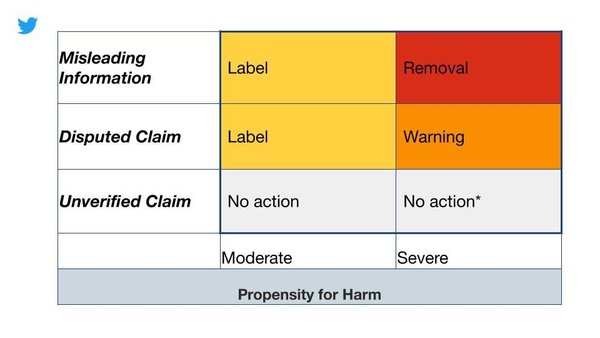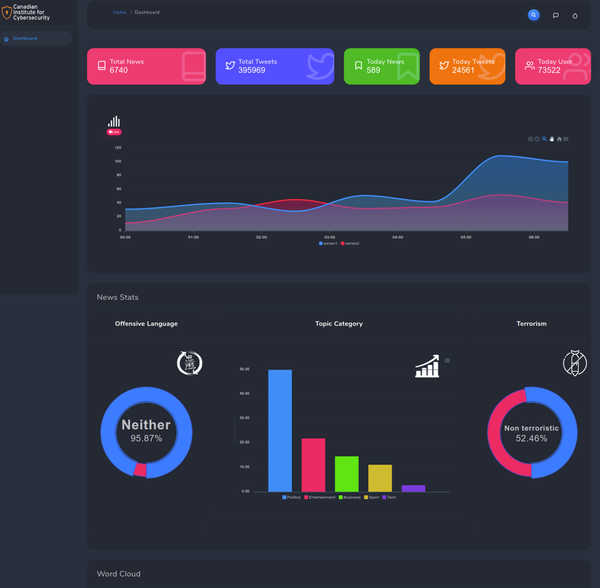
Combating the Infodemic: Fake news about COVID-19 is more threatening than the virus itself
In March 2020, an unprecedented improvement in the movement of both social bots and human users directed at broadcasting uncertain information known as fake news spotted. It is reasonable to consider this phenomenon as an un-controlled propagation of extremely socially threatening information. While you may not take them seriously, these incorrect/false news narratives have critical security implications and are engaging your emotions at different levels.
According to Pier Luigi Sacco, a faculty member at the Berkman Center for Internet & Society at Harvard University: “infodemics are the socio-cognitive equivalent of infective processes. Spreading information or ideas that, in the middle of a health crisis, systematically mislead the public opinion and prompt people to make wrong choices becomes a public health issue as, and as much as, the epidemic itself”.
Online video platforms such as YouTube should be better monitored for false/misleading news regarding COVID-19
Online video platforms such as YouTube are playing an essential role in the distribution of false and misleading information regarding COVID-19. Some recent studies show that more than 25% of COVID19 related videos on YouTube contain deceptive or inaccurate information. The researchers examined YouTube for the most viewed and related videos in English after 21 March 2020. The researcher used certified scoring algorithms such as "mJAMA" and "mDISCERN" to estimate the authenticity and condition of each video's content. And they proposed an attribute based on scores used in public health emergency assessment called CSS. A CSS point is given to any video containing any one of the following features: possible treatments, epidemiology, typical symptoms, viral spread, and prevention.
The total number of views for examined videos in the study added up to 257, 804,146. "Network news accounted for the largest proportion of views (29%), followed by consumers (22%); entertainment news (21%); internet news (12%); professionals (7%); newspapers (5%); educational bodies (2%); and government agencies (2%)". Long story short more than 20% of the tested videos proven to contained inaccurate and fake information, serving 62,042,609 distinct users. Considering the influence of social media in developing public perception and reaction, YouTube is an effective educational tool that needs better monitoring, especially during the current pandemic.
The study can be accessed through the following: link.
How COVID-19 fake news lead to cybercrime battleship and more?
Cyber-attacks daily interrupt our style of living by loading our social feeds with misleading/fake information to entice us toward clicking links and eventually controlling our actions. They are serious and change the result of significant judgments. Now many governments need to focus on trust issues caused by the endless interruption from COVID-19 fake news rather than tending to the critical needs of their citizens. An incident such as Yahoo, Equifax, and Ashley Madison, which resulted in big leaks of information, is an excellent example of some recent most influenced cyber attack.
“During this coronavirus pandemic, ‘fake news’ is putting lives at risk: UNESCO”
Recently, several misleading information (different remedies, number of death caused by the virus, effect of 5G towers on your immune system,etc.) is affecting everyone from your friends and family to president Trump. On 6 April 2020, At least 20 mobile phone masts across the UK are believed to have been set on fire or damaged because of a piece of fake information posted on social media. Authorities believed that this action initiated by a conspiracy theory connecting 5G technology to the emergence of Covid-19. Social posts written in anti-5G Facebook groups had prompted some followers to start the attacks and upload the footage online.

How do they do it?
Botnet farms and Troll factories utilize stolen private data to make sure our social trends are packed with fake/misleading news, prompting the user to engage in the discussion and get their friends and followers involved. Our most powerful sensations come into play, and attackers use our innocence to distribute misleading information about a specific trend such as COVID-19 to our trusted circles, spreading their attack.
World Health Organization (WHO): Fake news spreads faster and more easily than the virus, and it is just as dangerous .
The changing perspective and absence of sufficient scientific consent throughout the initial stages of the COVID-19 pandemic produced information exhaustion that was absorbed in conspiracy theories and incorrect health directions, initiating a different obstacle that governments and health professionals must sustain. In mid-February, World Health Organization (WHO), issued the following warning: "We're not just fighting an epidemic; we're fighting an infodemic. Fake news spreads faster and more easily than the virus, and it is just as dangerous."
How do we confront it?
There are several solutions suggested by experts to avoid spreading/believing false information regarding COVID-19. The following are some of the useful suggestions made by researchers and experts.
-
Double Check the Source: Check on the first websites to see if stories are published there too.
-
Supporting image: Check if the image is related to the content or not. Some of the recent false information was about a satellite image showing a high density of sulphur dioxide (SO2) in Wuhan, which they referred to as a result of the Chinese government burning the corpses of COVID-19 victims in hiding to escape from the official announcement. In fact, The image was taken from a weather channel that showed the natural coverage of SO2, which is not produced by the man-made fire.

-
Bad English: Reliable writers and organizations are less likely to make repeated grammar and spelling mistakes.
-
Fake accounts: Some accounts in social webpages try to simulate the actual account name. For instance, the private Twitter account @BBCNewsTonight, which was created to look like the genuine @BBCNews account, shared a fake story about an actor who was infected by COVID-19 virus.\
-
Over-encouragement to share: Be cautious if the message urges you to share – this is how viral messaging works.
-
Use fact-checking websites: Websites such as APFactCheck, Full Fact, PolitiFact, Factmata highlight common fake news stories. Myth busters by World Health Organization ( Link ) and BBC’s Reality Check ( Link) are among the recent COVID-19 reality check websites.
However, the result of some recent psychological researches show that most users do not pay attention to the above suggestions, and organizations have to come with their unique protective measurements. The following are some of the solutions offered by different organizations.
-Twitter has started placing warning messages on tweets carrying misleading information about Covid-19. Twitter explained in a blog post that its new strategy for dealing with problematic tweets takes a three-pronged approach. The specific action taken will depend on whether the company deems the claims in a tweet as “misleading,” “disputed,” or “unverified.

-Facebook has taken steps to eliminate content with misleading/fake information and conspiracy theories. It has been working with 56 fact-checking partners in 46 languages to rate fake news and alert users who read or share it if it is false.

-TikTok highlighted hashtags associated with the coronavirus to prompt users of its community guidelines to stop spreading the fake news.
- Weibo (Twitter-like platform) has been sending out a daily summary of fake news regarding COVID-19 that has been disputed by authentic government agencies, federal cyber police.
-Canadian Institute for Cybersecurity (CIC): a group of cybersecurity researchers has been working on an automatic false/hostile information detection system in CIC. Our system provides a complete visual data analytics methods to assist users in achieving a comprehensive understanding of malicious activities at multiple levels such as adversary's behavior, victim's behavior, content, and context level. Our system is developed based on features derived from the text, as well as user activities in social media. Our method focuses on automatic hostile detection by utilizing a variety of machine learning (ML) techniques, deep learning models, natural language processes (NLP), and social network analysis (SNA) techniques. We are enriching the system by upgrading our smart crawler and adding several analyses such as social user and follower credibility. We are working on making our system ready to use for the public in the near future.

As far as mitigation goes, I agree with Prof. Niam Yaraghi, an assistant professor at the University, who said:
“I don’t think censorship will do much to stop misinformation unless all platforms do it at the same time, When only a few platforms do it, people will move to other [ones] that do not censor and unfortunately [users] will even trust the alternative platforms more which will make the effect of misinformation worse”.